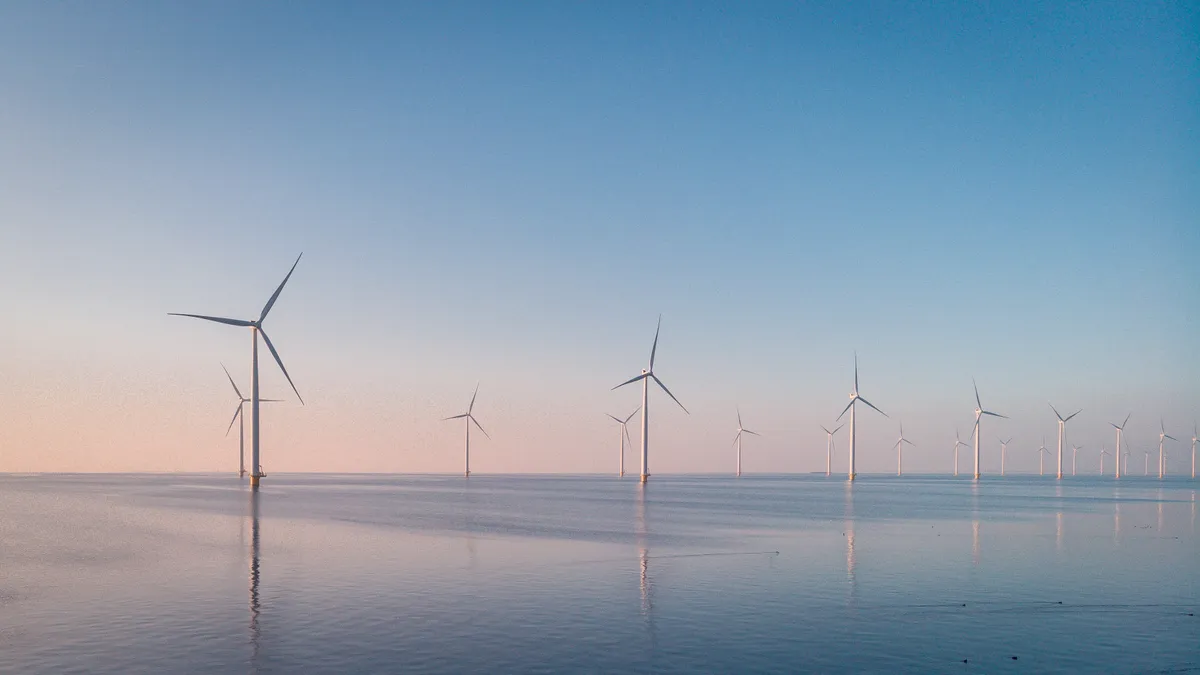Dive Brief:
- Danish offshore wind giant Ørsted announced last week a plan to recover from the damage done to it by last year’s financial turbulence in the offshore wind industry — a new business strategy that involves layoffs, pausing dividends, cutting capacity targets and divesting some assets.
- Chair Thomas Thune Andersen also announced last week that he will step down from the company, and S&P Global said that it has downgraded Ørsted’s credit rating from BBB+ to BBB.
- “We have had a good and constructive dialogue with S&P in recent months, and we were familiar with the possibility of a one-notch downgrade,” Ørsted’s interim CFO Rasmus Errboe said in a comment. “This downgrade will not have any unforeseen implications for our updated business plan or the associated funding strategy.”
Dive Insight:
Ørsted said that its “fundamental strategic choices on technologies and regions are unchanged” and that the company “still aims to be the world leader” in offshore wind, but it is revising its portfolio to manage risk.
Last year, the company canceled its Ocean Wind 1 and 2 offshore wind projects in New Jersey. In January, Ørsted announced it will “reposition” the 966-MW Skipjack Wind project off the coast of Maryland, seeking a new power contract, as the existing terms are no longer commercially viable.
Ørsted said it has learned lessons from the U.S. offshore wind market and will increase its focus on contingency planning, inflation protection, “greater flexibility on project timelines and commissioning dates” and project governance.
In the meantime, the company will lay off 600 to 800 positions globally, exit the Norway, Spain, and Portugal offshore wind markets, focus its U.S. portfolio on the northeast Atlantic region and plan for “leaner development” in floating wind.
After Ørsted announced its new strategy, S&P Global said that it had lowered the long-term issuer credit rating on the company from BBB+ to BBB but affirmed its A-2 short-term rating.
“We perceive the offshore wind industry as riskier than before — particularly in the U.S. where we note Ørsted’s weak project management, but we expect the company will be able to successfully manage the substantial industry risks it faces thanks to its remaining investment and divestment plans,” S&P Global said.
Andersen stepped down as chair after the new business plan was approved, he said. The board of directors plans to present a recommendation for a new chair at the annual general meeting on March 5.
Morningstar DBRS Vice President of Project Finance and Infrastructure Kevin Beicke said in an interview that Ørsted’s position as the largest offshore wind developer in the world means it “has experienced the largest amount of challenges” as the industry struggled last year due to supply chain disruptions, inflation and rising interest rates.
“Certainly it's a credit negative for Ørsted — announcing the significant writedowns from canceling certain projects or canceling contracts on certain projects,” Beicke said.
As a result, he said he thinks Ørsted will make flexibility in contract negotiation a high priority in the future.
“They don't want to be on the wrong end of these contracts in the future, where they would need to cancel contracts because costs have increased so much and there's nothing they can do about it,” Beicke said. “They don't want to take any more writedowns in the future. It's bad for the shareholders, bad for the stock price.”
He said that industry is aided by the fact that states with offshore wind procurement goals are incentivized to provide more flexible contracts going forward, to ensure that developers are well-positioned to help them meet those goals.
New York — which has a goal of procuring 9 GW of offshore wind by 2030 — offered developer-friendly terms in its most recent solicitation, allowing developers that had exited contracts to rebid in an expedited bid process with waived termination fees.
Ørsted’s announcement of an accelerated divestment program is necessary to “ease concern with the shareholders, Beicke said.
“In financing these future projects, Orsted could either issue equity and debt — or they can raise money by selling some of these projects that they have and the funds that they get from that could offset equity issuances,” he said. “If there are fewer equity issuances, and that part of the bucket is financed by asset sales of non-core assets, then there will be less concern from the shareholders because there'll be less new issuances involved.”














